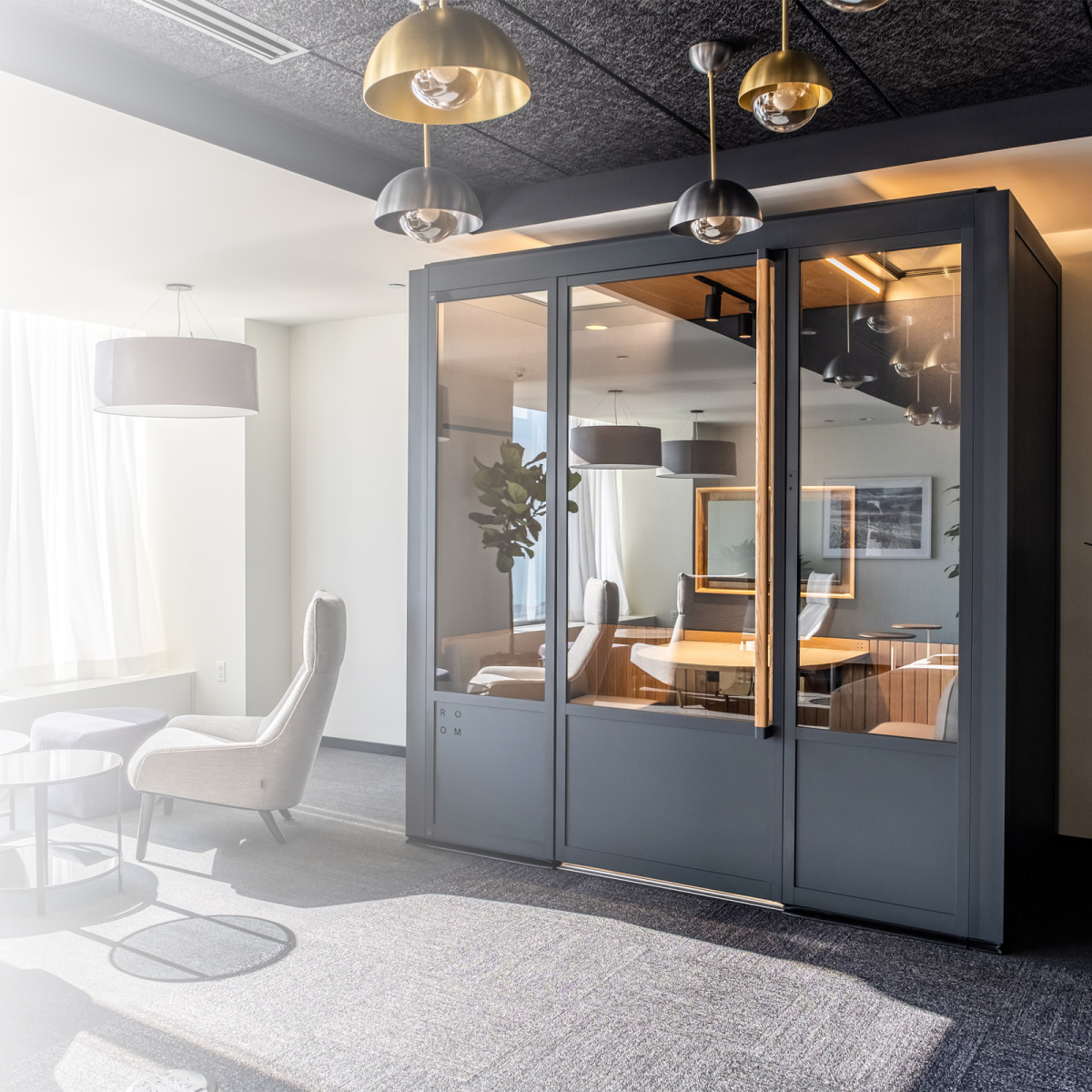The way we work is changing—the office is next.
Now that all U.S. adults are eligible for COVID-19 vaccinations, there’s a sense that we can at last start putting the pandemic behind us. But the past year has had a decided impact on the way we work—one that isn’t going away. If anything, we’re on the precipice of another workplace evolution. And while it won’t be as immediate as last March’s sudden shift to remote, it may be much more long lasting.
“Remote work has become much more normalized, and as a result, coming into the office will become a special, purpose-driven experience,” says Eivind Karlsen, Vice President of Product at Industrious. “People will come into work to create, to brainstorm, to bond—not simply out of force of habit. The office itself will become a much more collaborative setting in order to facilitate those kinds of group dynamics.”
Karlsen expects to see a shift to the hybrid workweek, in which employees split their time between the office—and the subject of Industrious’s latest guide, “The 30% Rule: Planning Your Team’s Return to the Office.”
He’s not alone; ROOM’s Co-Founder and CEO, Brian Chen, also expects that, with people spending part of their week remote, the office will become a hub for experiences people simply can’t get at home.
“Knowledge work and office work used to be one and the same, but if the last year has taught us anything, it is that we need to think of work as being untethered from physical space. This is a fundamental shift in the mental model for most companies and most employees, and office designs and layouts cannot help but adapt to reflect this change. There is no going back to the office of old.”
More collaboration.
Being around other people is what 74 percent of workers miss most about the office, according to Gensler’s latest “U.S. Work From Home Survey.” Whereas before the pandemic, group work was primarily relegated to the sidelines or designated rooms, now it will be at the heart of the floor plan.
Says Chen: “We have learned that remote work by itself can be incredibly isolating, and people are craving a feeling of connectedness and community. Offices—at their best—help to bring employees together as human beings. They connect employees with a company’s core values and mission, they build empathy across teams, and facilitate cross-functional collaboration. Offices must rise to the occasion and be designed to satisfy these emotional needs.”
Karlsen recommends that employers start by shifting 30% of their existing office space over to collaborative work then iterate from there. He says: “In addition to increasing the amount of collaboration space, there will also be a greater emphasis on embedding technology within group spaces to better facilitate mixed-presence sessions in which part of a team is remote while others share a space.”
More intentionality.
Open offices deliberately blur the lines between specialized work zones, encouraging employees to focus or collaborate in the same space. But now, workers will be going into the office for a specific reason—such as to solve a problem with a teammate or get away from the distractions of home. Spaces within the office will become more specialized in order to meet those specific needs, with dedicated areas for focus work; informal huddles; team meetings; and phone or video calls.
Says Chen: “Working from home, people have grown used to personal space and acoustic privacy. Having experienced these attributes in abundance over the last year, employees will not welcome a return to the open floor plan that so blatantly ignores these needs. On any given work day, time will modulate between focus and collaboration, and offices will need to accommodate spaces that are intentionally designed for each.”
It’s important to keep a close eye on how your team members are using the office to ensure you have the right amount of space assigned to each type of task. “Survey your employees monthly so that you can keep an eye on what is and isn’t working for them,” says Karlsen. “Don’t expect their needs to remain static—as circumstances change and as they try out new ways of working, they might discover that they need more A/V-equipped meeting rooms, for example, or fewer informal huddle spaces.”
More flexibility.
Because employee needs will continue to evolve—and because the pandemic has taught us all the importance of being adaptable — workplaces will become increasingly centered on flexibility.
“Some employers are looking for workplaces that they can evolve,” says Karlsen. “That might mean a space that they have the opportunity to modify month-to-month or one that accommodates a fraction of their employees most days, but which can scale up when they need to bring the full team together.”
Modular units and partitions will become much more prevalent as ways to create distinct collaborative spaces within a workplace because they make it easy to quickly transform a floor plan.
Says Chen: “No matter how much planning and surveying we do, the reality is that we will not know how our employees will use office space until they are back and voting with their feet. Embracing a modular approach to office buildout helps companies preserve optionality, and we believe the best strategy is to give yourself the ability to make design decisions that are based on observed behaviors rather than speculation.”
————
